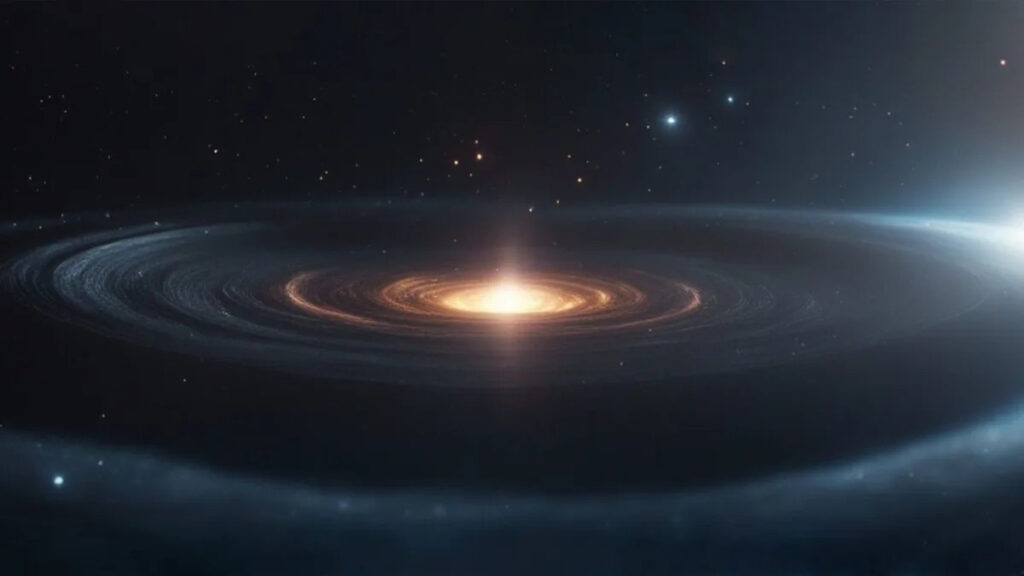
Deep within the first moments of the Big Bang, the universe experienced a colossal transformation. These primordial quakes, still reverberating through the cosmos today, hold the potential to revolutionize our understanding of the universe. Scientists are on the brink of detecting these elusive ripples, which could provide unprecedented insights into the origins of everything we know.
In 1916, Albert Einstein’s theory of general relativity predicted the existence of gravitational waves—ripples in the fabric of space-time caused by accelerating masses. Despite their theoretical interest, Einstein believed these waves were too weak to detect. Fast forward nearly a century, and a team of physicists developed the Laser Interferometer Gravitational-Wave Observatory (LIGO), which in 2015 confirmed the existence of gravitational waves by detecting those produced by merging black holes.
The Birth of Gravitational Waves
The detection of gravitational waves marked a monumental achievement in physics. These waves, though minute in strength when detected, were immensely powerful at their source. Merging black holes, for instance, release energy equivalent to converting the entire mass of the sun into pure energy in less than a second. This energy, invisible and purely gravitational, could tear apart anything within a light-year of its path.
However, the gravitational waves detected by LIGO are not the strongest the universe has produced. Cosmologists theorize that during the initial moments of the Big Bang, the universe underwent a rapid expansion known as inflation. This event expanded the universe by multiple orders of magnitude in a fraction of a second, setting the stage for the cosmos as we know it.
Inflation and Its Cosmic Imprint
Inflation remains a mysterious process. We lack concrete knowledge about what triggered it or why it ceased. However, indirect evidence supports its occurrence. During inflation, the sub-microscopic quantum foam expanded, leaving variations in density across the universe. These variations eventually led to the formation of galaxies and other cosmic structures.
The cosmic microwave background, a relic from 380,000 years after the Big Bang, carries a faint memory of inflation. Variations in temperature across the sky align with predictions from inflationary models, yet direct evidence remains elusive.
“The statistical properties of those patterns match what we expect from inflation,” said a leading cosmologist. “But still, we don’t have a direct view into the event itself.”
The Quest for Primordial Gravitational Waves
Inflation not only left an imprint in the cosmic microwave background but also generated gravitational waves of unparalleled strength. These primordial waves, though now weak and stretched by cosmic expansion, continue to ripple through the universe. Their detection poses a significant challenge due to their long wavelengths and subtle nature.
LIGO’s success lies in its ability to detect brief, sharp vibrations from events like black hole mergers. In contrast, primordial gravitational waves are long and slow, making them difficult to distinguish from background noise. Earthly detectors are unlikely to find them, necessitating the development of space-based observatories.
The Future of Gravitational Wave Astronomy
The Laser Interferometer Space Antenna (LISA), slated for launch in the mid-2030s, represents the next frontier in gravitational wave detection. Consisting of a trio of satellites flying millions of miles apart, LISA will search for minute changes in distance caused by passing gravitational waves.
LISA’s mission includes detecting waves from supernovas, supermassive black holes, and crucially, primordial gravitational waves. The strength of these waves at their origin remains unknown, adding uncertainty to their detectability today.
“LISA has a number of science goals, including finding the waves created by supernovas and supermassive black holes and hunting for primordial gravitational waves,” noted a project scientist. “Nobody knows if it will be successful.”
Beyond LISA: The Big Bang Observer
More than a decade ago, astronomers proposed the Big Bang Observer (BBO) as a successor to LISA. Envisioned as a network of dozens of spacecraft, the BBO would possess the sensitivity to detect nearly any primordial gravitational wave predicted by inflationary theories. However, the BBO remains a proposal without concrete plans for development.
For now, hopes rest on LISA. If successful, it could offer the first direct glimpse into the universe’s earliest moments, providing detailed insights into the inflationary epoch. Such discoveries would be transformative, reshaping our understanding of the cosmos.
The quest to detect these primordial ripples continues, promising to unlock secrets of the universe’s birth and evolution. As technology advances, the possibility of witnessing these ancient echoes grows ever closer, heralding a new era in cosmology.







